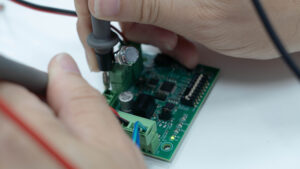Efficiency in electrical assembly is a decisive factor in any industrial project involving electrical panels, machinery or automation systems. In this context, electrical diagrams are not only technical reference documents, but key tools to reduce assembly times, minimize errors and facilitate partial automation processes.
In this article, we explore how the quality of electrical schematics can transform the wiring phase and make a competitive difference.
Well-designed layouts: the basis for efficient assembly
The wiring diagram is the common language among designers and installers. When it is well structured, with standardized symbology, clear cross-references, logical wire numbering and a clean layout, it becomes a smooth assembly guide that reduces doubt and margin for error.
On the contrary, an incomplete or disorderly layout can double assembly time and generate failures that force production to stop or redo part of the work.
A good schematic should facilitate quick identification of components, the routing of each cable and its connection. Incorporating information such as color coding, wire gauge and length helps operators work more autonomously and efficiently.
Digitization and automation of wiring: from paper to smart data
With the use of electrical CAD software such as EPLAN or SEE Electrical, schematics can be transformed into data structures that allow key tasks in the wiring process to be automated. For example:
- Automatic cable lists: extracted directly from the schematic, with length, reference and connection information.
- Preparation of wiring kits: sorting the cables in order of assembly.
- Integration with cable cutting, stripping and labeling machines: significantly reducing set-up time.
Digitization also opens the door to advanced solutions such as pick-to-light or augmented reality, where the electrical schematic becomes a living interface that assists the operator step by step.
Reducing errors and improving traceability
Wiring errors are a major source of rework and hidden costs. With clear and digitized schematics, it is possible to perform automatic validations that warn of inconsistencies such as unconnected terminals, poorly resolved cross-references or overloads in certain circuits.
In addition, well-prepared electrical documentation facilitates the traceability of the project: from the first installation to the maintenance, expansion or modification phases of the system. This is especially critical in regulated sectors or sectors with a high turnover of technical personnel.
Beyond assembly: a tool for value throughout the life cycle
A well-done schematic not only improves the initial assembly, but provides value throughout the life of the system. It enables:
- Faster diagnostics in case of failure.
- Train new technicians without having to rely on the original installers.
- Facilitate technical audits or quality certifications.
- Optimize future modifications or upgrades of the electrical system.
Electrical engineering, when well documented, becomes a strategic asset that reduces time, improves quality and increases the scalability of industrial projects.
In short, we can say that wiring automation begins long before the first cable is cut. It starts at the drawing board, with a rigorous, digitized electrical schematic designed for ease of assembly. In an industrial environment where time and quality are critical, investing in high-quality electrical schematics is not a luxury: it is a necessity to compete, scale and maintain technical excellence throughout the project.
In the engineering department of i-mas we are specialized in the combination of artificial vision technologies, deep learning and industrial automation in production processes, which allows us to offer integral solutions adapted to the specific needs of each client.
Want to learn more about our services? Contact us or visit our projects section!



